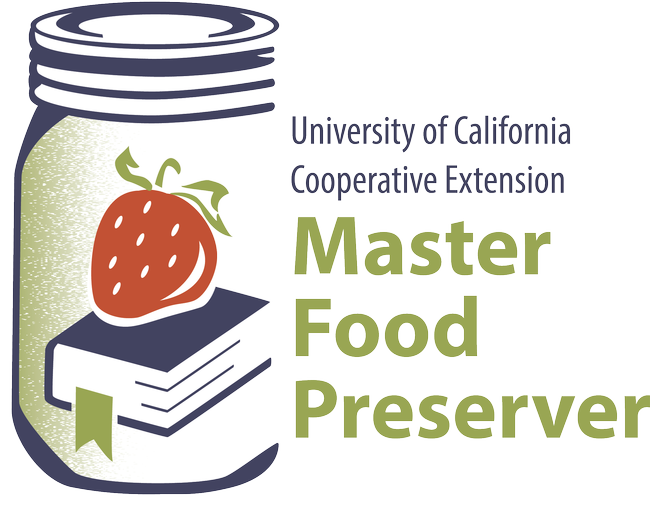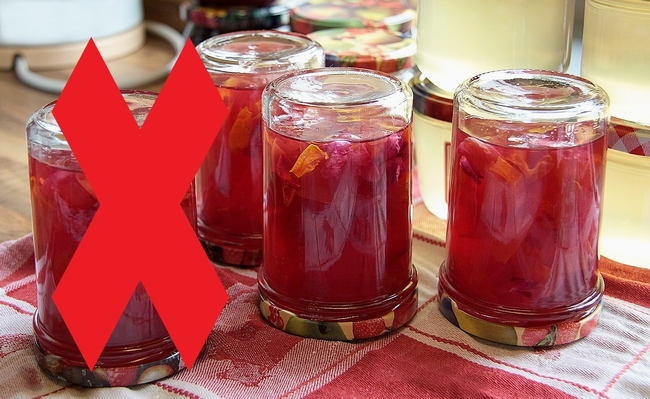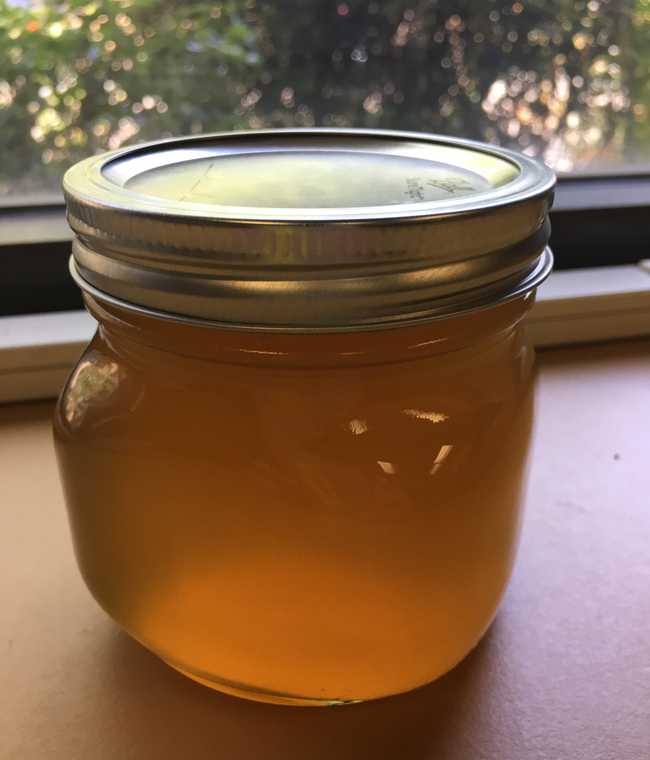Not your grandma’s jam
As a UC Master Food Preserver Program Coordinator, I've had the privilege of teaching new volunteers eager to learn more about food preservation, who then teach in their local communities.
Many students are experienced food preservers, creating delicious jams and jellies for their family and friends. It's exciting to see the ah-ha moments when I explain and discuss the reasons behind the research-based preservation techniques UC Master Food Preservers teach. Just because grandma or mom did something and no one got sick, does not mean that the process is safe by today's standards.
The traditional methods of preserving jams and jellies was to cook the product, put it in a sterile jar, and either pour melted paraffin wax on top or put a lid on then turn the jar upside down to force a seal. Each method has its own set of food safety concerns.
Using paraffin wax to create a barrier between the jam or jelly and the surrounding environment was fairly effective as long as the product was stored in a consistently cool place, such as a root cellar. Not many of us have the luxury of a root cellar. Unfortunately, if the storage temperature of the jar fluctuates, the wax contracts with cold temperature (letting in pathogens and – in my country house – ants) and then expands with warm temperatures to trap the undesirables in the product beneath the wax.
If there was mold under the wax, it was a common practice to scrape it off since it only appeared to be on the surface. We know better now. Molds don't just grow on the surface, they can create carcinogenic toxins (mycotoxins) that remain in the food, invisible to the human eye.
Another common canning practice was to sterilize the jars, fill almost to the top with hot jam or jelly, put the lids on, and turn the jars upside down to force out the air and create a vacuum seal. This is open kettle canning. This method made a more consistent barrier than wax, but there is still a common potential problem with the food inside the jar: there is no guarantee you destroyed all food borne pathogens and spoilage organisms.
When we boil jam and jelly in a cooking pot, we still don't reach a high enough temperature to destroy all spoilage and food poisoning organisms. Plus, the air is filled with floating microorganisms trapped in the jar when we add a lid. When we process a jar of jam or jelly in a boiling water or atmospheric steam canner, there's enough of an increase in the temperature within the jar to destroy the pathogens and enough of a pressure increase to force air out of the jar. When we remove the jars from the canner, the pressure equalizes and the vacuum seal forms over pathogen-free food.
Often people don't realize the purpose of adding (so much!) sugar to a jam and jelly isn't just to add sweetness. Sugar preserves the food and partners with the pectin to form the gel.
When I teach about the purpose of sugar in a jam or jelly, I have students (youth and adult) act out what happens in a jar of jam. Three volunteers at the front of the room represent water, sugar, and pathogens (the bad guy). Foodborne pathogens need water to grow, so if the pathogens have access to the food's water (the water and pathogen volunteers link arms), the pathogens do what they're supposed to do: grow mold, slime, fuzz – all that disgusting stuff you find growing in the containers shoved at the back of your fridge. We need to separate the water in food from the pathogens, so we bring in sugar. At a molecular level, the sugar molecules bind with the water molecules (the water volunteer now links arms with the sugar volunteer, leaving the pathogen volunteer off to the side). This bonding lowers the water activity of the food, making the water unavailable to the pathogen (private party by invitation only). The pathogen wants to join the food party but the sugar acts as a bodyguard, keeping the pathogen away from the food's water and preventing the pathogen from growing (the sugar volunteer blocks the pathogen volunteer from getting near the water volunteer). That's how sugar preserves the jam and jelly.
But what if you want to have a low sugar jam or jelly (aka fruit spread)? First, use a pectin and recipe designed for low-sugar to get a good gel. (Low-sugar pectin uses calcium instead of sugar to make the gel. Regular pectin uses sugar to make the gel, so if you just cut the amount of sugar, you'll make a delicious runny syrup.) Second, process the fruit spread in a boiling water or atmospheric steam canner to destroy the microorganisms. While the jar is sealed, nothing will grow. Unfortunately, once you open the jar, there isn't enough sugar to prevent microorganisms from growing (you have a tiny sugar bodyguard). Even stored in the refrigerator, mold forms within a couple of weeks and you need to toss the fruit spread. I always recommend canning low-sugar fruit spread in small 4-ounce jars to make it easy to finish using the product before it molds.
Knowing why current canning recommendations work is key to ensuring the jams and jellies we serve to our friends and family are safe to consume. UC Master Food Preservers rely on the National Center for Home Food Preservation for their information; you can, too!
For more information about the UC Master Food Preserver Program, including the Food Preservation Video Library, visit mfp.ucanr.edu.




